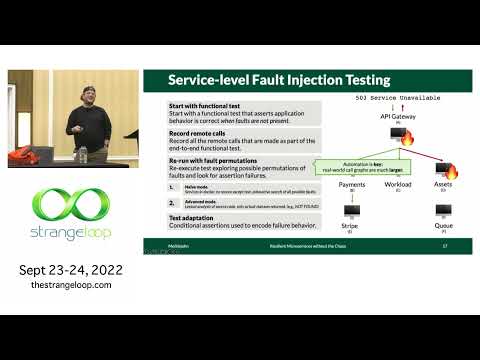Description:
Explore resilient microservices architecture and fault tolerance testing in this conference talk from Strange Loop 2022. Dive into Service-Level Fault Injection Testing and learn about Filibuster, a tool designed to verify microservice application behavior under failure conditions. Discover how to leverage existing functional tests to identify bugs before deployment, combining static analysis, test synthesis, and principled fault injection. Gain insights into the challenges of transferring academic code to practical implementations, based on a large-scale microservice deployment powering a popular app. Examine real-world incidents, including bad deployments and third-party dependency failures, to understand the importance of resilience testing. Learn about automatic instrumentation, JUnit integration, and standalone Filibuster implementation. Enhance your understanding of microservice fault tolerance and improve the reliability of your distributed systems.

Resilient Microservices Without the Chaos
Add to list
#Conference Talks
#Strange Loop Conference
#Programming
#Software Development
#Computer Science
#Distributed Systems
#Code Quality
#Software Engineering
#Fault Tolerance